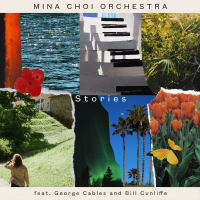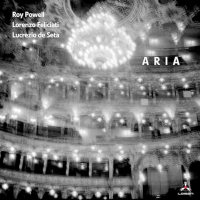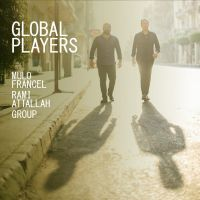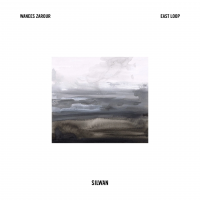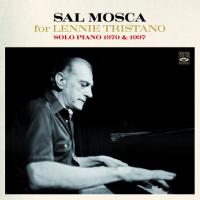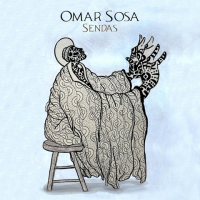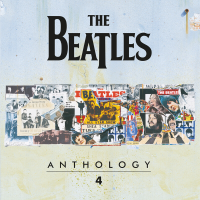Home » Jazz Articles » Reassessing » Antonio Carlos Jobim: Antonio Carlos Jobim: Wave
Antonio Carlos Jobim: Antonio Carlos Jobim: Wave
 Antonio Carlos Jobim
Antonio Carlos JobimWave
CTI/A&M
1967
Singer, guitarist, pianist and—above all—composer Antonio Carlos Jobim was among the first artists to be signed by producer Creed Taylor when he set up CTI Records in 1967. The Brazilian, who helped launch bossa nova internationally when his tune "Desafinado" became a Top 10 hit for saxophonist Stan Getz and guitarist Charlie Byrd in 1962, had already worked with Taylor (producer of the Getz/Byrd disc), notably on The Composer Of Desafinado Plays (Verve, 1963). Unless you count the soundtrack for the 1959 movie Black Orpheus, which Jobim co-wrote with Luiz Bonfa, Wave was Jobim's third album, following the Verve disc and The Wonderful World Of Carlos Jobim (Warner Bros., 1965).
For the first three years of its life, before Taylor secured the finance to go fully independent, CTI was a subsidiary of A&M Records. For this reason, Wave, recorded and released in 1967, has not shown up in the CTI Masterworks 2011 reissue program; this starts with recordings released post-A&M (including Jobim's 1970 album Stone Flower).
Remarkably, Wave reached #5 in the U.S. jazz album charts in 1967. Remarkably, because despite the inclusion of musicians such as bassist Ron Carter, flautist Jerome Richardson and trombonists Urbie Green and Jimmy Cleveland, it takes a very, very big stretch of the imagination to think of Wave as jazz. Most of the tracks last less than three minutes, permitting very little improvisation, and a 17-piece string ensemble—arranged and conducted by Claus Ogerman with lashings of sweetening—is prominent throughout (Don Sebesky was Creed Taylor's first-call string arranger, but Jobim's favorite was Ogerman).
Undeniably, Ogerman's arrangements sound dated in 2011, but therein lies much of Wave's modern appeal: its vivid evocation of a long-gone time and place. To dismiss it as an ephemeral pop offering—which it frequently has been, because of the strings—rather than a work of merit, is in any case to miss the point: the album was intended, by Jobim anyway, primarily as a showcase for his compositions. And on that level, it is a runaway success.
In 1967, Jobim told writer Norman Gimbel that he visited the U.S. only to ensure that his songs were properly recorded. "The first recording of a song," he said, "is the seed from which the song will grow. I come here to plant seeds." He preferred to work with lyricists rather than write his own words, and was a vocalist of limited ability (he sings on only one track on Wave). Jobim saw himself as a composer first and a performer second, and Wave was an opportunity to get ten new tunes out into the marketplace.
What great tunes they are. "Wave" and "Triste" have become almost-standards, and the others, while less known than "Desafinado," "The Girl From Ipanema," "One Note Samba" or "Corcovado," are also top drawer. Bathed in Ogerman's lush string arrangements, and given backbone by the aforementioned musicians plus a trio of drummer/percussionists—including Dom Um Romao, a few years later a member of Weather Report—all the material has Jobim's trademark delicacy and allure.
It is a shame Jobim sang infrequently, for like many other songwriters of limited vocal ability, he performed his own songs with great charm. His brief vocal on "Lamento" has a vulnerability which adds to the spirit of the song. So, too, does his harpsichord on the more upbeat "Antigua." Mostly, Jobim is heard on piano, playing the tunes and adding short solos, while keeping the bossa beat gently swinging on overdubbed acoustic guitar.
As jazz, Wave has no more authenticity than its cover shot suggesting an African giraffe traversing a Brazilian beach, but it remains an elegant and delightful album.
Tracks: Wave; The Red Blouse; Look To The Sky; Batidinha; Triste; Mojave; Dialogo; Lamento; Antigua; Captain Bacardi.
Personnel: Antonio Carlos Jobim: piano, guitar, vocal (8), harpsichord (9); Joseph Singer: French horn; Ray Beckenstein: flutes, piccolo; Romeo Penque: flutes, piccolo; Jerome Richardson: flutes, piccolo; Urbie Green: trombone; Jimmy Cleveland: trombone; Ron Carter: bass; Dom Um Romão: drums; Bobby Rosengarden: drums; Claudio Sion: drums; Bernard Eichen: violin; Lewis Eley: violin; Paul Gershma: violin; Emanuel Green: violin; Louis Haber: violin; Julius Held: violin; Leo Kruczek: violin; Harry Lookofsky: violin; Joseph Malignaggi: violin; Gene Orloff: violin; Raoul Poliakin: violin; Irving Spice: violin; Louis Stone: violin; Abe Kessler: cello; Charles McCracken: cello; George Ricci: cello; Harvey Shapiro: cello.
Tags
PREVIOUS / NEXT
Support All About Jazz
 All About Jazz has been a pillar of jazz since 1995, championing it as an art form and, more importantly, supporting the musicians who make it. Our enduring commitment has made "AAJ" one of the most culturally important websites of its kind, read by hundreds of thousands of fans, musicians and industry figures every month.
All About Jazz has been a pillar of jazz since 1995, championing it as an art form and, more importantly, supporting the musicians who make it. Our enduring commitment has made "AAJ" one of the most culturally important websites of its kind, read by hundreds of thousands of fans, musicians and industry figures every month.













